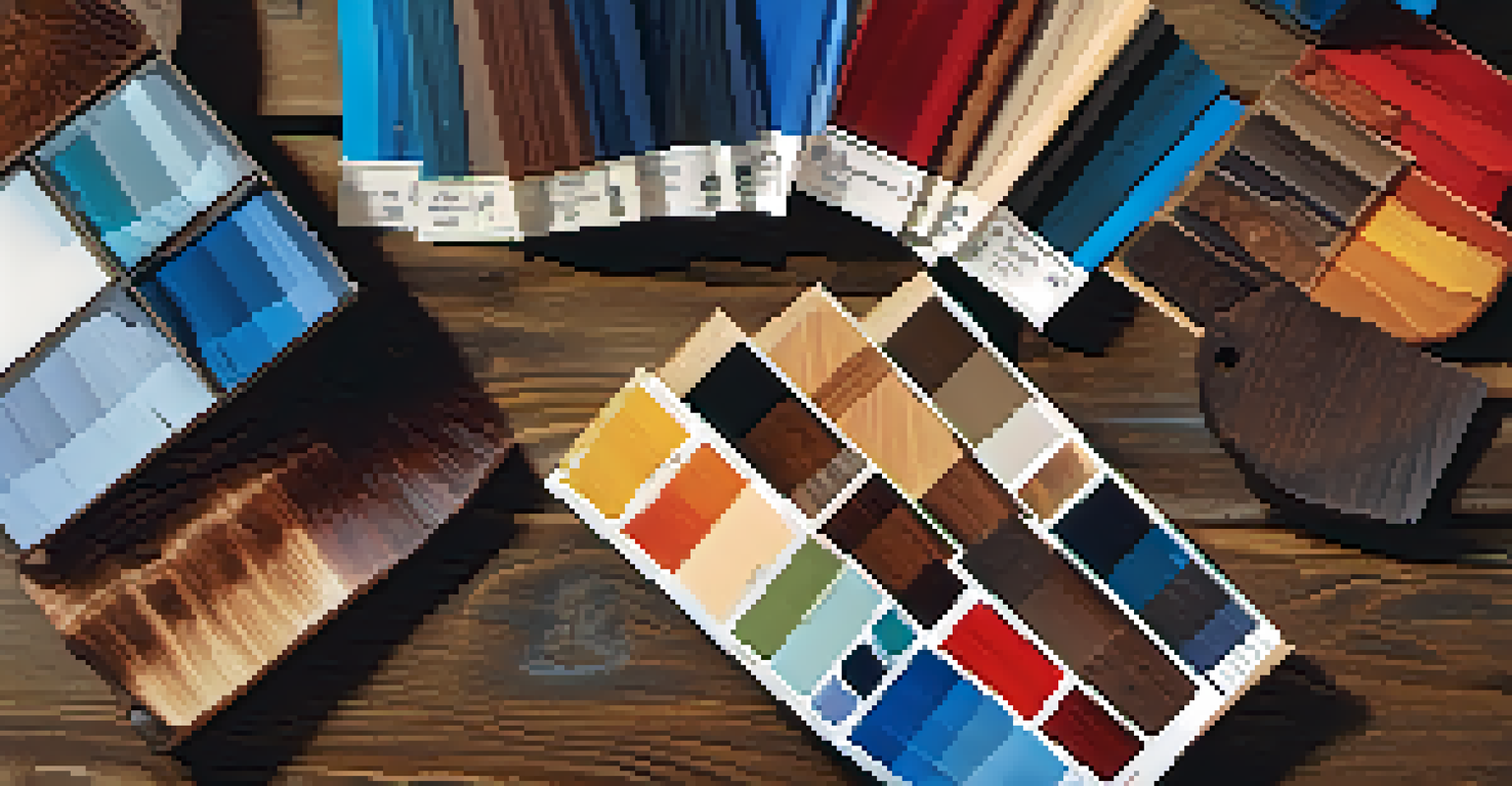Choosing the Right Wood Stain for Your Ukulele

Understanding Wood Types for Your Ukulele
Before diving into stains, it's essential to understand the different types of wood commonly used in ukuleles. Mahogany, spruce, and koa each offer unique tonal qualities and aesthetics. For instance, mahogany provides a warm, soft sound, while koa is known for its bright, clear tones.
The beauty of wood is not in its finish, but in its natural characteristics.
Knowing the wood type will help you choose a stain that enhances not only the look but also the sound of your instrument. Different woods react differently to stains, so what works for one may not work for another. This understanding sets the stage for making an informed choice.
Additionally, consider how the wood grain and texture will complement the stain. A well-chosen stain will highlight the natural beauty of the wood, making your ukulele not just an instrument, but a piece of art.
Why Staining Matters for Your Ukulele
Staining your ukulele isn't just about aesthetics; it also serves a protective function. A good wood stain can seal the wood, preventing moisture damage and prolonging the lifespan of your instrument. Think of it as sunscreen for your ukulele, shielding it from harmful elements.

Moreover, a stain can enhance the wood's natural characteristics, such as grain patterns and color variations. This enhancement can transform a standard ukulele into a unique piece that reflects your personal style. It's like wearing a custom outfit that expresses who you are.
Understanding Wood Types Matters
Different types of wood, like mahogany and koa, influence both the sound and appearance of your ukulele.
Ultimately, the right stain can change how your ukulele looks and sounds, making it an essential consideration for any player. So, investing time in the right stain is a step toward creating a personalized musical experience.
Choosing Between Transparent and Opaque Stains
When selecting a wood stain, you’ll encounter two main categories: transparent and opaque. Transparent stains allow the natural grain of the wood to shine through, offering a more classic look. If you love the beauty of the wood itself, this might be your best choice.
Art is not what you see, but what you make others see.
On the other hand, opaque stains provide a solid color that can completely change the appearance of your ukulele. While this can be a fun way to express creativity, it may hide some of the wood's natural beauty. It's like deciding between a classic black dress or a bold, colorful outfit.
Consider what you want your ukulele to say about you. If you’re aiming for a timeless, elegant look, a transparent stain might be ideal. But if you want something vibrant and eye-catching, don’t hesitate to go opaque.
Exploring Different Stain Colors
Color is a critical aspect of stain selection, and it largely depends on your personal taste and the wood type. Common colors range from rich browns to vibrant reds and even blues. Each color can evoke a different mood or emotion, similar to how a piece of artwork can resonate with you.
Consider how the color complements your style and existing decor. For instance, a deep walnut stain on a koa ukulele can highlight its natural beauty while adding warmth. Think of it as choosing the right paint color for a room; it sets the entire tone.
Stains Protect and Enhance Beauty
Staining not only enhances the wood's characteristics but also protects it from moisture and damage.
Don't be afraid to experiment! Sample a few colors on scrap wood pieces before committing. This trial-and-error process can lead to discovering shades you might not have initially considered.
The Importance of Test Samples
Before you apply any stain to your ukulele, testing samples on scrap wood is crucial. This practice allows you to see how the stain interacts with the wood’s natural color and grain. It's like tasting a dish before serving it to guests; you want to ensure it’s just right.
Using a test sample helps you avoid costly mistakes and unwanted surprises. Different woods can absorb stains differently, resulting in unexpected colors or finishes. Testing also gives you a chance to adjust the color or technique as needed.
After testing, you’ll gain confidence in your choice, making the application process smoother. Plus, it’s a fun way to engage in the creative process of customizing your instrument!
Application Techniques for a Flawless Finish
Applying wood stain requires some technique to achieve a flawless finish. Whether you opt for a brush, cloth, or spray, your method will affect the final appearance. Think of it as painting a masterpiece; the right tools and techniques can make all the difference.
Ensure the wood surface is clean and sanded before applying the stain to promote even absorption. Apply the stain in thin layers, allowing each coat to dry before adding more. This gradual approach helps you control the depth of color and prevents an overly dark finish.
Testing Stains Ensures Success
Testing stain samples on scrap wood helps you avoid mistakes and achieve the desired look for your ukulele.
Don’t rush the process! Take your time, and enjoy the transformation of your ukulele. The care you put into applying the stain will pay off in the end, resulting in a beautiful and personalized instrument.
Caring for Your Stained Ukulele
Once your ukulele is stained, maintaining its beauty is essential. Regular cleaning with a soft, dry cloth will help remove dust and fingerprints without damaging the finish. Think of it as keeping your car clean; a little maintenance goes a long way.
Avoid exposing your ukulele to extreme temperatures or humidity, as this can cause the wood to warp or crack. Store it in a suitable case away from direct sunlight, which can fade the color over time. Just like a precious painting, your ukulele deserves protection from the elements.

Regularly checking the finish for any signs of wear will help you catch issues early. If the finish begins to dull, consider applying a wood conditioner to maintain its luster. With proper care, your stained ukulele can remain a cherished piece for years to come.